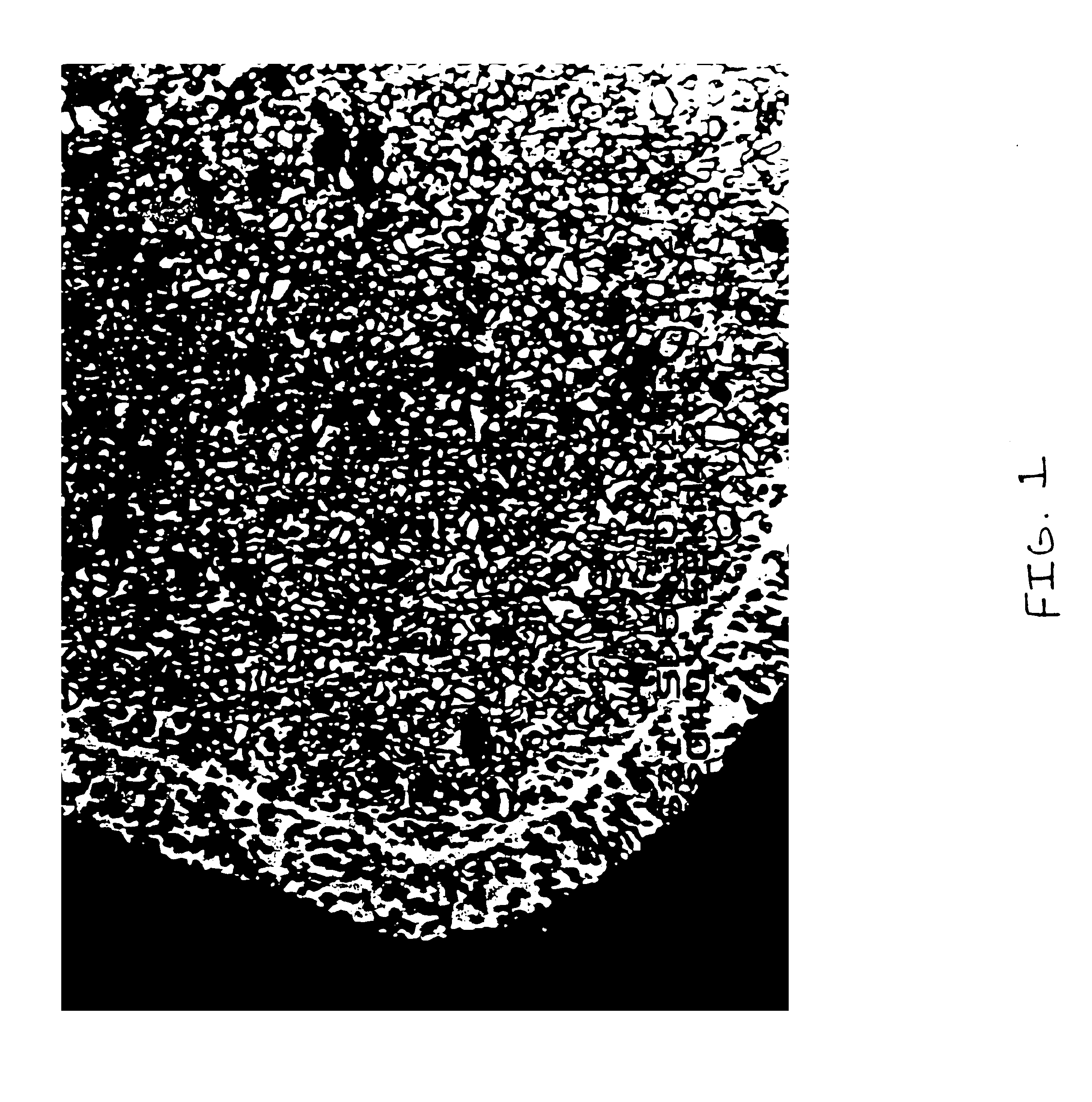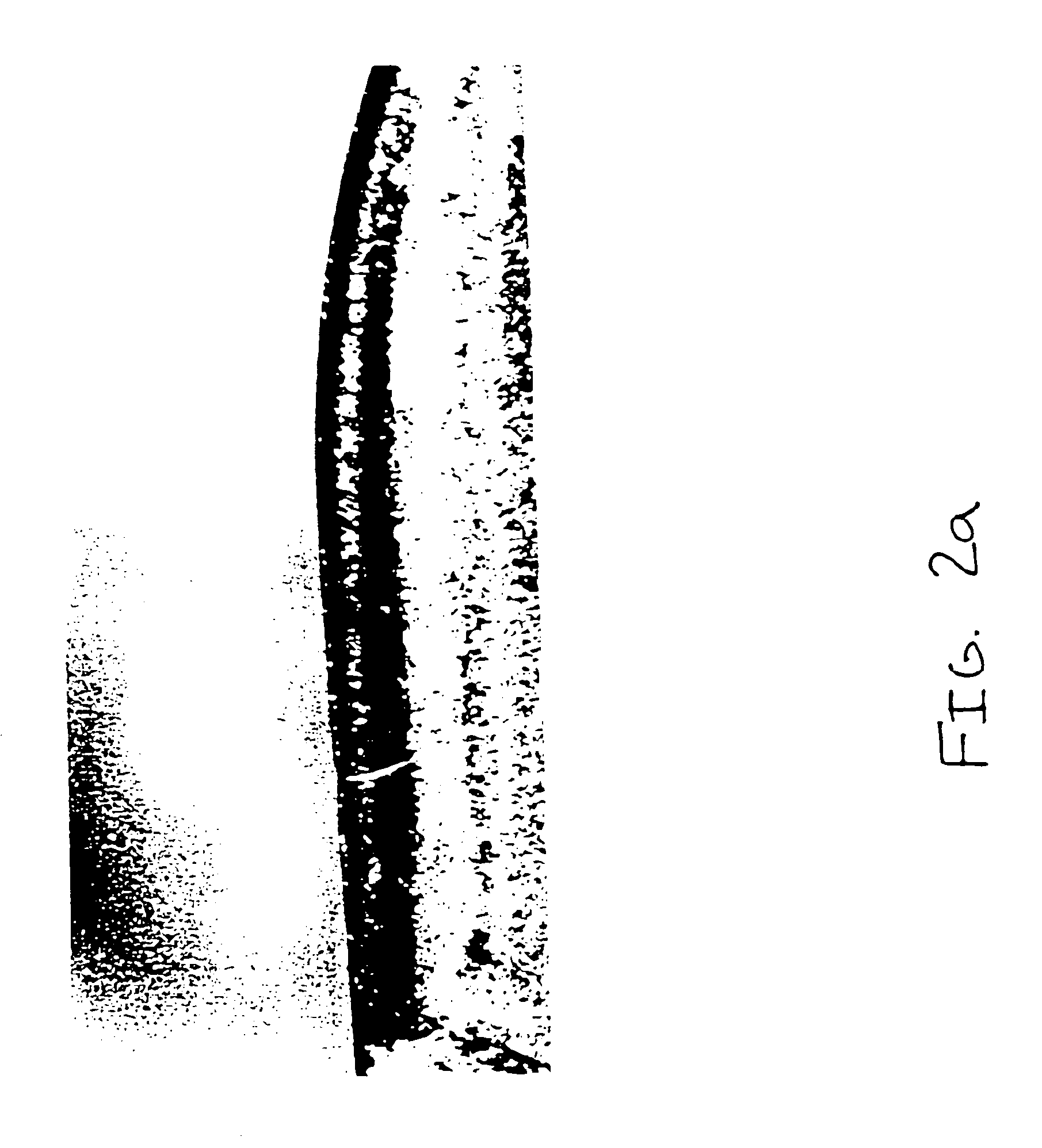Coated substrate
a technology of coating and substrate, applied in the field of coating substrate, can solve the problems of reducing affecting the service life of the insert, and affecting the service life of the insert, and achieve the effect of high corrosion environmen
- Summary
- Abstract
- Description
- Claims
- Application Information
AI Technical Summary
Benefits of technology
Problems solved by technology
Method used
Image
Examples
example 1
[0049]A Bernex 250 CVD coating furnace was prepared by introducing into the coating chamber of the furnace a 10 l / min (liters / minute) flow of hydrogen gas to establish a 200 mbar hydrogen gas pressure within the chamber. The chamber was then heated to 850° C. A cemented carbide substrate composed of H-91 grade material available from Stellram, LaVergne, Tenn., was placed in the prepared furnace chamber and the chamber atmosphere was heated to 850°. H-91 grade material is composed of 88.5 weight percent tungsten carbide, 11.0 weight percent cobalt, and 0.5 weight percent of a mixture of TiC, TaC, and NbC. The material exhibits a hardness of 89.7 HRA, 14.40 g / cc density, and a transverse rupture strength of approximately 389,000 psi.
[0050]The flow of hydrogen gas was then stopped, and a concurrent flow of 20 l / min nitrogen gas and 1 l / min hydrogen chloride gas was introduced into the chamber to provide a chamber pressure of 800 mbar. Binder was etched to a depth of approximately 5 mic...
example 2
[0056]The Bernex 250 CVD furnace used in Example 1 was prepared using the procedure described in that example. A cermet substrate composed of SD-5 material, but having the same size and shape as the substrate in Example 1, was placed into the coating furnace and the furnace atmosphere was heated to 920° C. SD-5 material is a cermet grade material available from Stellram, LaVergne, Tenn., and is composed of TiCN and Mo2C particles in a Co / Ni binder. SD-5 material has the approximate elemental composition 45.2 Ti, 22.6 Mo, 10.9 C, 2.3 N, 19.0 Ni, and exhibits the following approximate mechanical properties: 91.8 HRA hardness, 6.30 g / cc density, and a transverse rupture strength of 300,000 psi. After heating the furnace atmosphere to 920° C., the Co / Ni binder was then etched to a depth of 5 microns from the substrate's surface using concurrent flows of hydrogen chloride and nitrogen gases at the flow rates, pressure, and reaction time used in Example 1 above. The furnace chamber was th...
example 3
[0057]Three Stellram cutting inserts of type SEKN-42-AF4B composed of SD-5 material (as described in Example 2) were first etched and then coated with the MT-milling coating by the following procedure.
[0058]A CVD furnace chamber was prepared using the procedure described in Example 1. The SD-5 cutting inserts were then inserted into the furnace chamber and were etched using the procedure of Example 2. Once etched, the inserts were coated with MT-milling coating by the procedure of Example 1. The MT-milling coating produced on the etched inserts by the foregoing procedure was approximately 5 microns in thickness and the surface TiN layer infiltrated the voids etched in the inserts' surfaces. Approximately 5 microns of the coating extended above the inserts' surfaces. FIG. 1 is a photomicrograph (2040×) of a prepared cross-section through the surface of one of the etched and coated SD-5 inserts. The photomicrograph shows the infiltration of the MT-milling coating into the voids etched...
PUM
| Property | Measurement | Unit |
|---|---|---|
| Depth | aaaaa | aaaaa |
| Depth | aaaaa | aaaaa |
| Depth | aaaaa | aaaaa |
Abstract
Description
Claims
Application Information
 Login to View More
Login to View More - R&D
- Intellectual Property
- Life Sciences
- Materials
- Tech Scout
- Unparalleled Data Quality
- Higher Quality Content
- 60% Fewer Hallucinations
Browse by: Latest US Patents, China's latest patents, Technical Efficacy Thesaurus, Application Domain, Technology Topic, Popular Technical Reports.
© 2025 PatSnap. All rights reserved.Legal|Privacy policy|Modern Slavery Act Transparency Statement|Sitemap|About US| Contact US: help@patsnap.com



